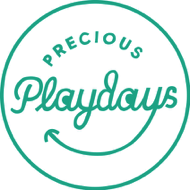I have put together a very short video to help parents and practitioners understand when some researchers say is the best time for children to learn the names of objects. (Source: Pereira, Smith & You, 2014 and Bambach, Crandall & Smith, 2018).
If you scroll down, I will walk you through another way of teaching language called “progressive time delay.” (Source: Wolery, Doyle and Gast, 1993).
We all learn and digest information in different ways. If you prefer to read rather than watch a video, I’ve got you, here is the dialogue from the video:
The most opportune moment for infants to learn the names of objects is when the object is in their hands and prominent within their visual field. This simultaneous engagement with tactile, visual and verbal information creates a powerful learning experience.
When babies hold objects, they not only see them but also feel their textures, weights, and shapes. When they also hear the name of the object it forms strong neural connections in the brain.
When objects are large and clearly visible, babies and young children can focus their attention on them more effectively, aiding in recognition and memory consolidation. This is especially important for children who are learning multiple languages.
Children need to learn the name of an object before they learn what colour it is. When the child begins naming the object themselves, for example, when they say “car” you can then reply, “yes, it’s a blue car.” This is a great way to extend the child’s language whilst teaching them how to form sentences
Ready, Steady… Go!
The idea of progressive time delay is that you progressively delay saying a key word in play.
This activity may build anticipation so the child is compelled to fill the gap. To do this, you can play a game like “ready, steady.. go!”
You can also play “ready, steady… go” games throughout the day with different materials and resources. For example, when you are cutting a banana, when pouring water, or when playing on the swings during a visit to the park.
How to play:
1. hold the car at the top of the slope and say, “ready steady…” as you say “go” push the car down the slope.
2. Repeat the activity over and over again a number of times.
3. After a number of times playing, delay saying “go” whilst holding the car at the top of the slope. Take any signal from the child as “go.” So, if their body twitches, they make eye contact, they flap their arms, or they say “go". Take that as communication and push the car down the slope.


